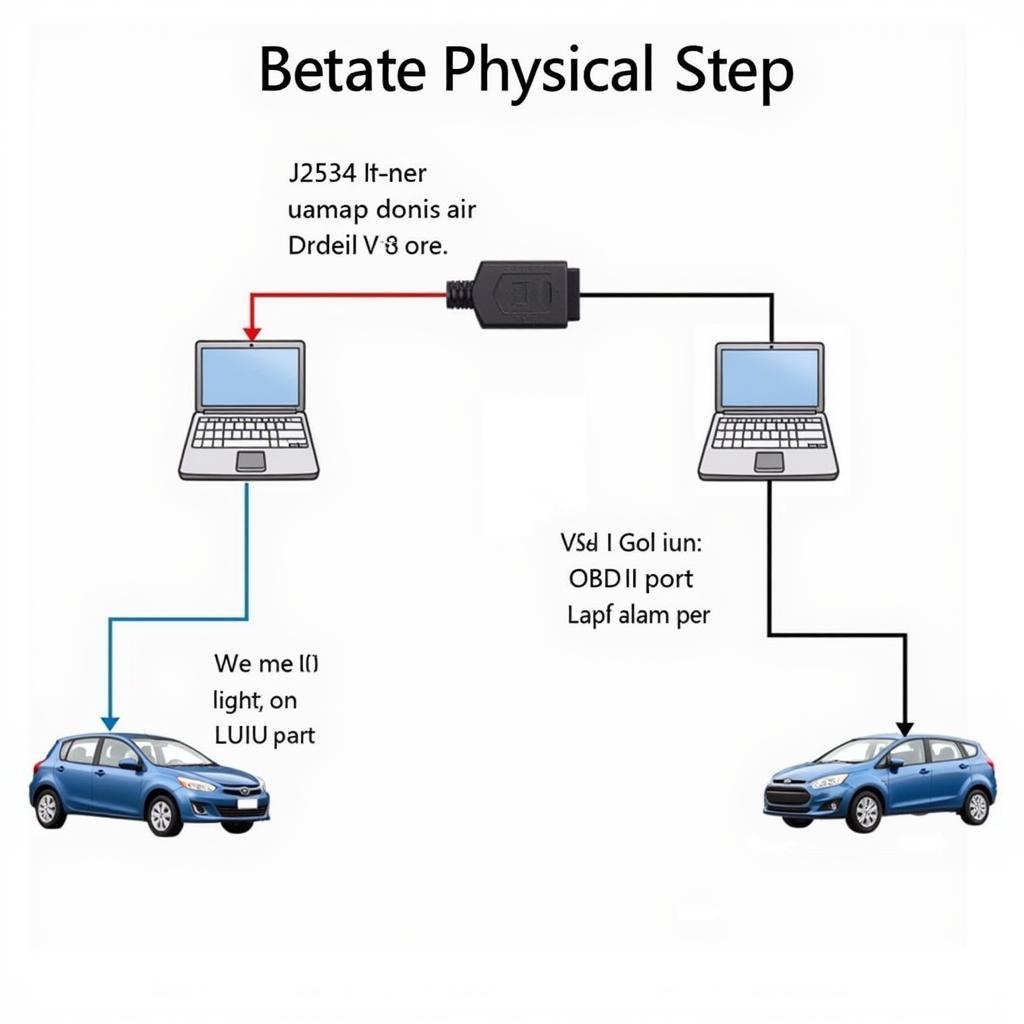A vehicle that doesn’t shift properly can be a frustrating and potentially dangerous problem. Whether you’re experiencing rough gear changes, slipping transmissions, or your car won’t shift at all, a diagnostic tool can be an invaluable resource in identifying the root cause. This guide will explore the benefits of using a Diagnostic Tool To Check Shifting, explain the different types of tools available, and provide a step-by-step guide on how to use them.
[image-1|diagnostic-tool-check-shifting|Car Diagnostic Tool|A mechanic is using a diagnostic tool plugged into a car’s OBD-II port to check for shifting problems. The tool displays real-time data about the transmission’s performance.]
Why Use a Diagnostic Tool to Check Shifting?
Modern vehicles are incredibly complex, with electronic systems controlling everything from engine performance to transmission shifting. When a shifting problem arises, it can be difficult to pinpoint the cause without the right tools. A diagnostic tool allows you to:
- Read and Interpret Trouble Codes: Your vehicle’s computer system stores Diagnostic Trouble Codes (DTCs) when it detects an issue. A diagnostic tool can read these codes, providing valuable insight into the nature of the problem.
- View Live Data Streams: Monitor real-time data from various sensors related to your transmission, such as transmission fluid temperature, shift solenoid operation, and throttle position.
- Perform Actuator Tests: Initiate specific actions within the transmission system, like engaging solenoids, to verify proper operation.
[image-2|car-shifting-problems|Car Having Shifting Issues|A frustrated driver is shown behind the wheel of his car, stuck in traffic with the engine revving high, indicating potential car shifting problems.]
Using a diagnostic tool to check shifting offers several advantages:
- Save Time and Money: By quickly pinpointing the problem, you can avoid unnecessary repairs and reduce the time your vehicle is out of commission.
- Increase Accuracy: Diagnostic tools provide objective data, reducing the chance of misdiagnosis and incorrect repairs.
- Empower DIYers: With the right diagnostic tool, even home mechanics can gain a deeper understanding of their vehicle’s transmission system.
Types of Diagnostic Tools for Checking Shifting
There are several types of diagnostic tools available, each with varying levels of functionality and cost.
- Basic Code Readers: These entry-level tools can read and clear basic DTCs related to the engine and transmission.
- OBD-II Scanners: Offer more advanced features, including the ability to view live data streams and perform some actuator tests.
- Professional-Grade Scan Tools: Used by mechanics and dealerships, these tools provide comprehensive diagnostic capabilities, including advanced programming and coding functions.
[image-3|mechanic-using-scanner-tool|Mechanic Using Scanner Tool on Car|A mechanic in a repair shop is shown using a professional-grade scanner tool, connected to a car, to diagnose a shifting problem, showcasing the importance of specialized equipment.]
For most vehicle owners, an OBD-II scanner or a basic code reader with transmission-specific capabilities will be sufficient for diagnosing shifting problems.
How to Use a Diagnostic Tool to Check Shifting
Here is a general guide on using a diagnostic tool to diagnose shifting problems. Always consult your vehicle’s specific repair manual for detailed instructions.
Step 1: Locate the OBD-II Port
The OBD-II port is typically located under the driver’s side dashboard.
Step 2: Connect the Diagnostic Tool
Plug the diagnostic tool into the OBD-II port.
Step 3: Turn the Ignition On
Turn the ignition to the “on” position but do not start the engine.
Step 4: Access the Transmission Control Module (TCM)
Navigate the diagnostic tool’s menu to access the TCM, which controls the transmission.
Step 5: Read Trouble Codes
Select the option to read trouble codes. Record any codes displayed.
[image-4|reading-obd2-codes|Reading OBD2 Codes on a Diagnostic Tool|The screen of a diagnostic tool displays a list of OBD2 codes related to the car’s transmission, highlighting the code P0700, which indicates a general transmission malfunction.]
Step 6: Research Trouble Codes
Use a reliable source to research the meaning of each trouble code.
Step 7: View Live Data Streams
Select the option to view live data and monitor parameters such as:
- Transmission fluid temperature
- Shift solenoid status
- Input/output speed sensor readings
Step 8: Perform Actuator Tests (If Applicable)
If the diagnostic tool offers this functionality, you can test specific components like solenoids.
Step 9: Analyze the Data
Compare the data you’ve gathered to the manufacturer’s specifications to identify potential problems.
Step 10: Clear Trouble Codes
Once you’ve addressed the issue, clear the trouble codes using the diagnostic tool.
Expert Insights
“Using the right diagnostic tool is crucial for efficient and accurate transmission diagnostics,” says John Smith, a certified master automotive technician with over 20 years of experience. “It can be the difference between a quick fix and a costly repair.”
Conclusion
A diagnostic tool is an indispensable tool for diagnosing and troubleshooting shifting problems in modern vehicles. By understanding how to use these tools effectively, car owners and mechanics can save time, money, and frustration, ensuring smooth and safe driving.
For expert assistance with automotive diagnostic tools, contact ScanToolUS at +1 (641) 206-8880 or visit our office at 1615 S Laramie Ave, Cicero, IL 60804, USA. Our team of specialists can help you find the perfect tool for your needs.


